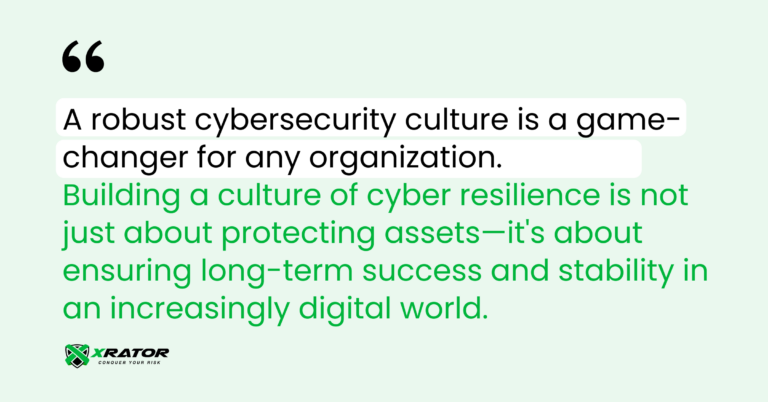Leading by Example: The CISO as Cybersecurity Champion
A successful cybersecurity culture starts with the CISO leading by example. This involves making security an integral part of the organization’s operations, not just the responsibility of a dedicated department.
Here’s how CISOs can lead by example:
Strategic Integration:
CISOs must ensure that security is a prominent aspect of business planning. This involves incorporating security considerations into project development, vendor selection, and product lifecycles. By promoting a “security-first” mindset, CISOs emphasize that security is a cornerstone of organizational success.
Open Communication:
Clear communication is essential. CISOs should translate complex technical security concepts into simple, actionable language for leadership and employees. Regular town hall meetings, internal newsletters, and targeted security briefings can raise awareness and promote a shared understanding of cyber threats and defenses.
Security Budget Advocacy:
CISOs must advocate for adequate security budgets. This allows for investment in the necessary tools, technologies, and personnel to manage cyber risks effectively. By highlighting the potential financial and reputational damage of cyberattacks, CISOs can secure the resources needed for a robust security posture.
Engaging Security Awareness Training: Making Security Effective
Traditional security awareness training can often be dull and ineffective. To improve engagement and effectiveness, training should be interactive and hands-on.
Innovative solutions like XRATOR’s gamified training modules and simulations allow employees to test their cybersecurity skills in a virtual environment. By facing realistic scenarios, such as phishing simulations or social engineering attacks, employees gain a deeper understanding of threats and best practices.
Empowering Employees: Equipping Them for Secure Choices
Beyond awareness, employees need tools and resources to make secure decisions daily.
Here are key strategies:
Clear Security Policies:
Providing clear, concise, and accessible security policies gives employees a framework for secure decisions. These policies should cover acceptable technology use, password management, and reporting suspicious activity.
User-Friendly Security Tools:
Complicated security tools can hinder productivity and discourage compliance. User-friendly solutions like single sign-on systems (e.g., Okta), intuitive password managers (e.g., LastPass), and security management tools (e.g., XRATOR Operator, Splunk) make secure practices easier to follow without disrupting workflows. These solutions provide seamless interfaces for managing security operations, ensuring that users can maintain high security standards with minimal effort.
Open Reporting Channels:
Employees are often the first to spot potential threats. Creating a culture of open communication, where employees can report suspicious activity without fear of reprisal, is crucial. Dedicated reporting channels, such as hotlines or anonymous systems, encourage vigilance and prompt threat response.
Building a Cybersecurity Culture is an Ongoing Process
Creating a strong cybersecurity culture is not a one-time task. It requires continuous assessment and improvement.
Here are some ways CISOs can keep their security culture dynamic and effective:
Regular Phishing Simulations:
Conducting regular phishing simulations helps identify vulnerabilities in employee awareness. These simulations allow organizations to gauge susceptibility and adjust training programs accordingly.
Embrace Feedback Mechanisms:
Employees face security challenges daily. Encouraging feedback through surveys or communication channels provides insights into their experiences with security tools, policies, and training. This feedback loop enables continuous improvement and ensures the security culture remains relevant.
Security Champions:
Identifying and empowering “security champions” within different departments can be effective. These champions act as liaisons between the security team and their colleagues, promoting awareness and a collective responsibility for cybersecurity.
The Power of a Strong Cybersecurity Culture






